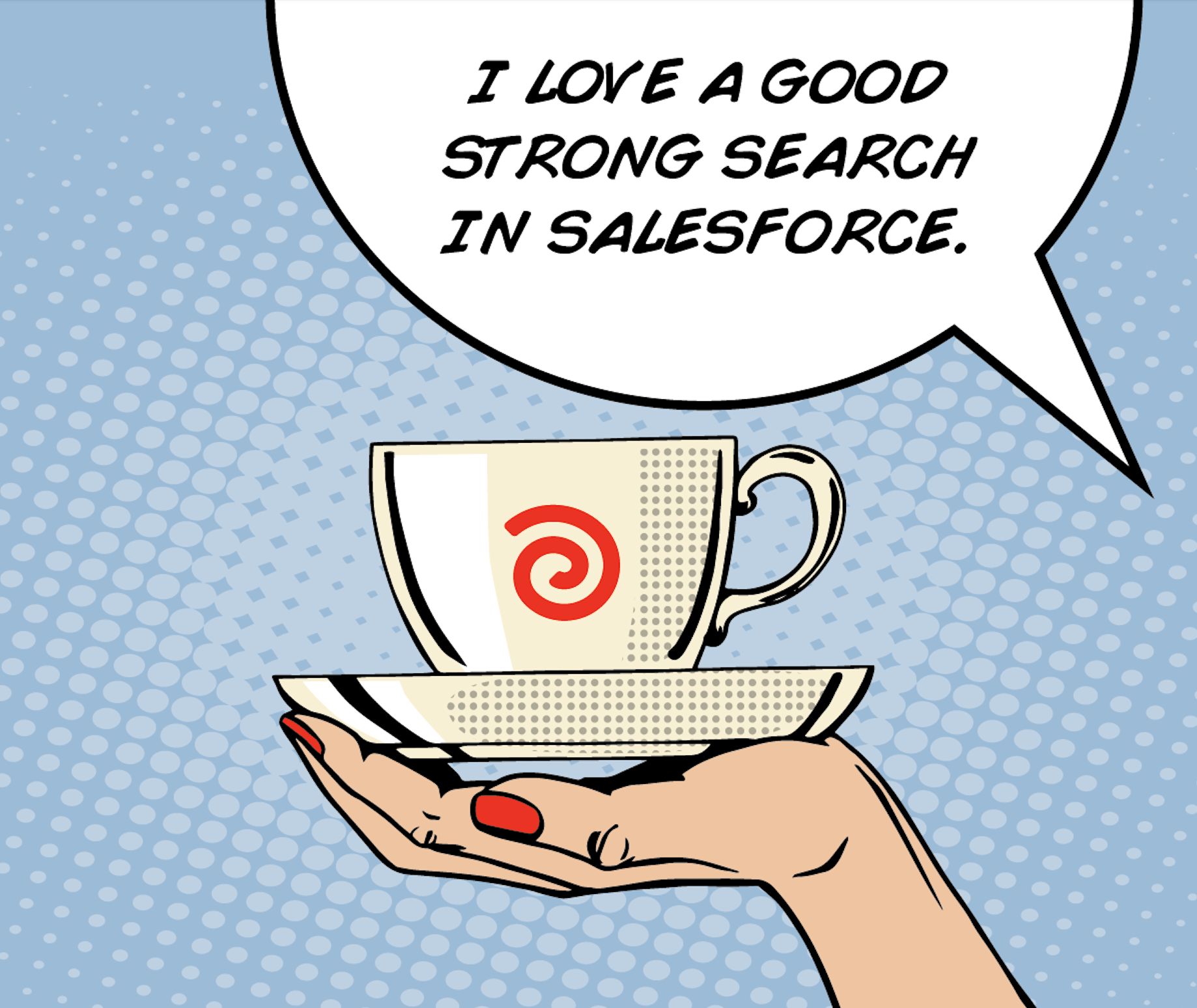Want to dramatically improve your ability to search in Salesforce? You’ve come to the right place. This article will show you how to…
- max out the quality of your search.
- max out the comprehensiveness of your search.
It also features a video demonstrating these capabilities with search experts Sid Probstein and Andrew McKay.
Let’s dive in.
How to Max Out the Quality of Search in Salesforce
Salesforce users want three capabilities from search:
- Querying the way we want: The search engine should be able to use whatever details we have to find what we’re looking for, even if we query quantitatively, qualitatively, or both at the same time.
- Results we can understand: Each entry on the results page should tell a complete story, meaning that related objects should be searched as part of the parent object, regardless of whether it’s a structured record or an attached file.
- Search that leaves nothing out: The results page should include the most relevant information, no matter its location. (Yes, that means even if it’s buried in a picklist, description field, another system, or another org altogether).
Unfortunately, these capabilities weren’t possible for the longest time.
Why?
Well, because Salesforce is basically a relational database, and relational databases are built for quantitative information. This means search for this type of system struggles with qualitative queries, negatively impacting all three of our desired capabilities.
When people tried to solve the problem by applying web search technologies to relational databases, the result was a search that could handle qualitative queries but wasn’t so good at quantitative ones. It also ignored the relationships between objects the relational database was built to describe: The connective tissue binding objects in Salesforce to other key information in a logical way.
And yup, you guessed it: This negatively impacted all three of the capabilities.
Thankfully, this is all in the past.
A few years ago, some of the world’s top search engineers got together to solve this sticky problem, and what they did was combine web search technology with SQL search technology to form…

(We know, it’s a Lego version. But it’s the only picture we can use and not get sued).
…no, not Voltron.
But they did make something else that was pretty spectacular: deep search.
Deep search applications (like KonaSearch) make it possible to search on Salesforce like you’ve always wanted:
- You can query however you want. Have some specific numbers? Great. Want to use words instead? Sentiment? Topics? Natural language? Also great. How about all of the above? You’re golden. Consider this query: “Find me manufacturing companies with a market cap of at least $20B that are well-liked and committed to employee diversity.”
- You can understand the results (and they’re excellent). No more context-less data. Search for results that make sense to you, not the physical structure of the data source. Example: searching for candidates in a recruiting app should include job and education history, skills and interests, and resumes, CVs, and cover letters. Why should you care how all this is structured in your system? Answer: you shouldn’t.
- Your search covers (almost) everything. The right answer will never be found if it lives in a source that is never searched. Make sure you always have a complete 360° view. Don’t let data structure, data source, location, or language determine what is relevant; otherwise, it’s “garbage in, garbage out”.
Okay, before we get too excited, note the “almost” in point three. It wasn’t an accident.
There are two situations where deep search can’t be applied, and we’ll walk through them — and how to account for them — in the next section.
How to Max Out the Comprehensiveness of Search in Salesforce
As powerful as deep search is, the technology is not without its limitations.
Deep search relies on a process known as “indexing” to work, but indexing isn’t always practical for all data sources you may need to search. Cost and security can both be barriers:
- Cost. Sometimes, it’s simply too expensive to index a system’s entire corpus of data — for example, staffing job boards or the entire web. This is a common issue for smaller companies.
- Security. In other cases, indexing is not permissible because of privacy concerns — for example, including a company’s entire email system in your search results.
To overcome these barriers, we look to an alternative: “federated search.” Federated search does not index data. Instead, it sends the query directly to the search engine of the data source that returns a set of results ordered by relevance. So, for example, we’re not indexing the company’s entire email system; we’re sending the query only to the user’s email account.
Unfortunately, federated search in its basic form is kind of dumb. Every source has its own version of “relevance” and its own way of searching its data. How do we merge these results into a common set?
Answer: metasearch. Metasearch applications (like Swirl) use AI to optimize the query so it works best for the source environment and add intelligence to the results to provide better relevancy than conventional federated search.
Search applications that provide both deep search and metasearch are the best way to search Salesforce and everything related to It. Even if what you’re looking for is on page 127 of a PDF hidden in a zip file or deep in a forgotten email chain, you can use these applications to find it.
Learn How to Use Deep Search and Metasearch from the Experts
We just covered the basics of deep search and metasearch, but there is much more to the story.
To learn about these revolutionary Salesforce search technologies directly from the experts, watch the video below. Search pros Sid Probstein and Andrew McKay unpack how deep search and metasearch are solving the data silo problem in enterprise search and give a live demo of the technology at work.

